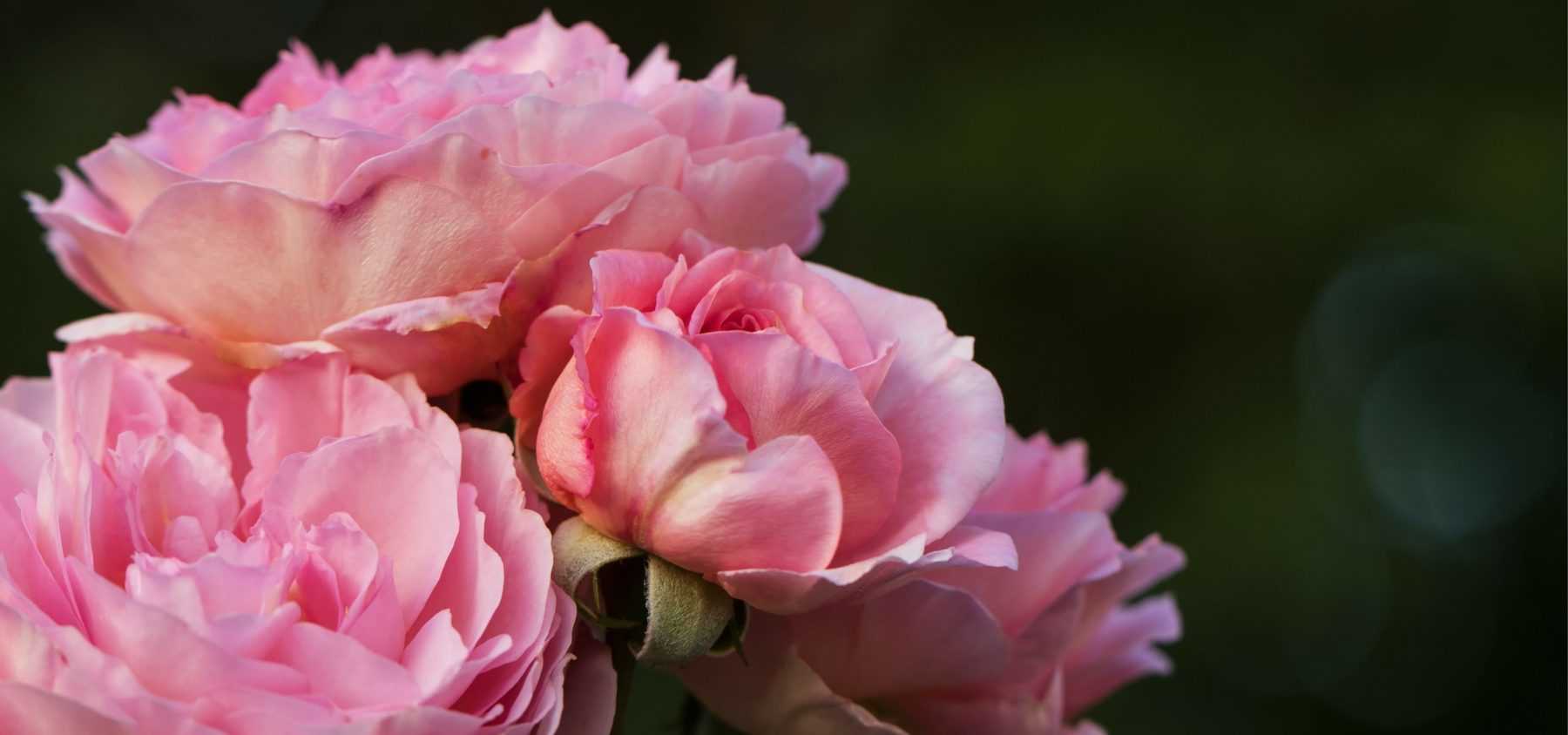
Roses: Successful Planting in Pots and Bare Root
Our expert advice for planting your roses
Contents
Symbols of love and romance, we cherish rose bushes for their delicate, beautifully fragrant flowers, whether single or double, which come in a wide range of colours. Planting them is a crucial step that should never be overlooked, as it is vital for their flourishing! Indeed, a rose bush that gets off to a poor start will rarely develop into a fine specimen. Container-grown or bare-root roses are not planted in the same way, nor at the same time. Discover our planting guide to establish your rose bush under the best possible conditions.
When to plant roses?
-
Container-grown roses
Roses sold in containers allow for an extended availability and establishment period. You can plant them all year round, provided you remain attentive during the weeks following planting. Indeed, the shrub’s rooting period lasts about 8 weeks in spring or autumn, so regular watering is necessary. During very hot months, establishment is more delicate; you’ll need to prune the plants quite short and water more frequently.
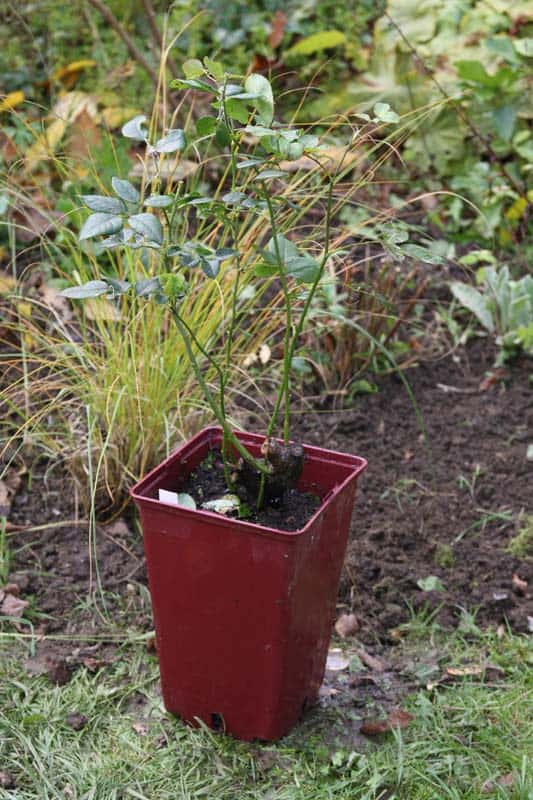
Container-grown rose
Lifted in October to be available for sale, these roses should be planted from November until the end of March, avoiding frost periods.
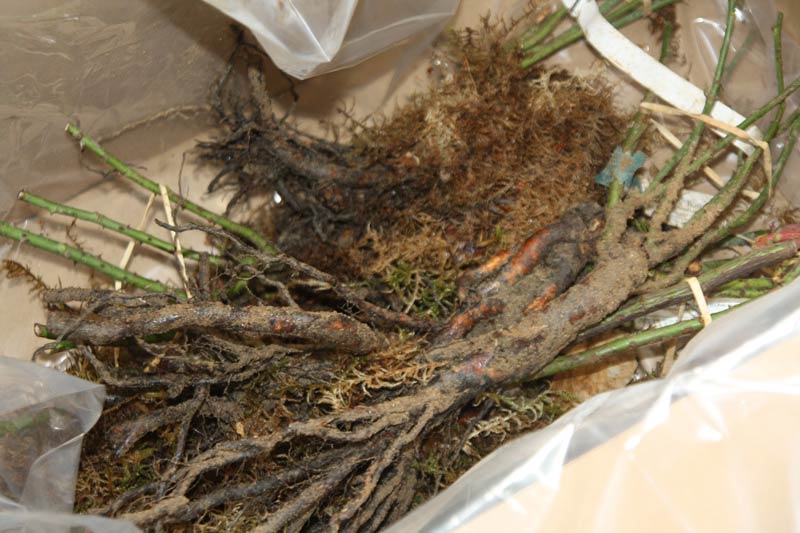
Bare-root roses
How to prepare the soil for planting a rose bush?
Although roses prefer good, slightly clayey garden soil, they can adapt to almost any soil type. However, it is advisable to amend and enrich the soil.
- Sandy, porous soil should be improved with organic matter (well-rotted manure, compost…) which should be thoroughly mixed into the soil.
- In heavy soil, drainage must be improved. While roses need plenty of water, they dislike stagnant moisture that suffocates their roots, or very compacted soil that hinders rootlet development. In both cases, it is essential to facilitate water drainage and soil aeration by adding organic matter such as compost, leaf mould, or gravel and pumice.
What matters most for roses is loose, well-aerated soil rich in organic matter, where young roots can easily spread. This is why you should mix good homemade compost or well-rotted manure into the soil surrounding the roots.
Discover other Roses
View all →Available in 1 sizes
Available in 1 sizes
Available in 1 sizes
Available in 1 sizes
Available in 1 sizes
Available in 3 sizes
Available in 1 sizes
Available in 1 sizes
Available in 1 sizes
Available in 1 sizes
How to plant a container-grown rose?
Rose bushes sold in plastic containers are not meant to stay as they are! You must absolutely replant them in your garden or in a larger pot.
To plant a container-grown rose bush:
- Soak the rose bush in its pot in a large basin of water, until no more bubbles rise to the surface.
- Using a spade, dig a hole 40 cm long, wide and deep. Remove the pot carefully to avoid damaging the root ball.
- Place a stick across the hole to indicate ground level.
- Position the plant so the graft union sits slightly above the stick, or plant so only 2-3 cm of soil covers the root ball.
![]()
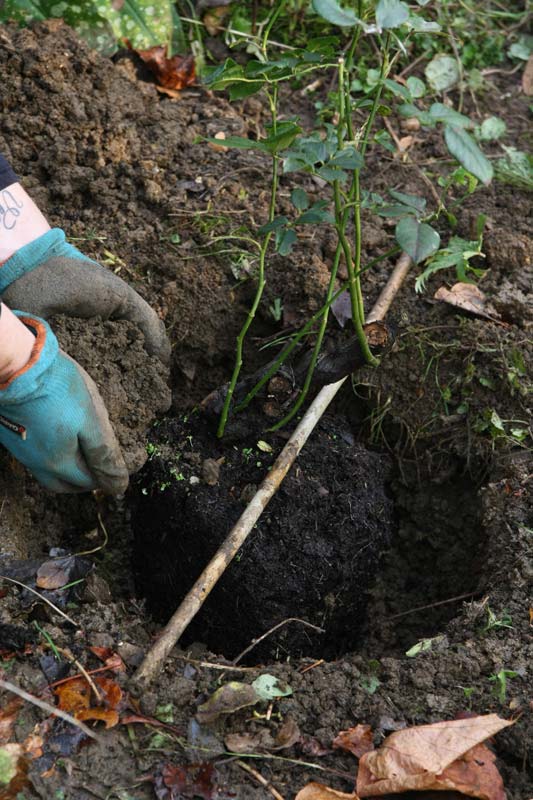
- Backfill and water thoroughly to eliminate air pockets.
In dry weather, water regularly (about one watering can per week) to encourage root establishment.
- Tip
Roots may grow through the drainage holes of your container-bought rose bush. As it’s impossible to repot without damaging the precious root hairs, cut the container away with secateurs to preserve as many roots as possible.
Read also
Taking Rose Cuttings: When and How?How to plant a bare-root rose?
Upon receiving your bare-root roses, fully immerse them in a bucket of water to rehydrate the tissues. Ideally, they should be planted on the same day.
It may happen that you receive your roses on a day when planting is impossible. Don’t panic: you can heel them in temporarily until final planting.
Heeling in: To create a temporary trench, dig with a spade, in a shaded and sheltered spot, a 30 cm wide and deep furrow. Place the roses closely together at a slight angle to reduce wind exposure. Cover them with garden soil or compost, ensuring the substrate fills gaps between roots to avoid air pockets. The mixture should reach up to the graft union, then be firmly compacted. If it doesn’t rain, lightly water to maintain root moisture. They can remain heeled in for 3-4 days.
Planting day:
- Start by “dressing” the roots. This involves trimming, with clean secateurs, any roots that may have been damaged during lifting. Clean cuts promote better establishment.
- Prune back branches if needed, ensuring the above-ground portion matches the root system in size.
- Mix soil, water and compost (or well-rotted manure) in a bucket to create a thick slurry called “root dip”. For full details on root dipping, see our dedicated guide: Root Dipping for Trees and Shrubs.
- Dip the rose up to the graft union. This step significantly improves establishment.

Root dipping is a crucial step when planting roses.
- Using a spade, dig a 40 cm wide and deep hole, breaking up the soil well.
- Add a spadeful of homemade compost or well-rotted manure to the excavated soil and mix. You can also add some hoof and horn meal which breaks down slowly (over 2-3 years) providing excellent long-term nutrition. It should be incorporated generously at planting time. For more on organic fertilisers, see our guide: Hoof and Horn, Dried Blood, Guano… What Are They For?
- Position your rose, ensuring roots are spread evenly in the hole without bending upwards.
- Place a stick across the hole to indicate ground level.
- Begin backfilling while holding the rose at the correct height, with the graft union (knob) slightly above the stick.
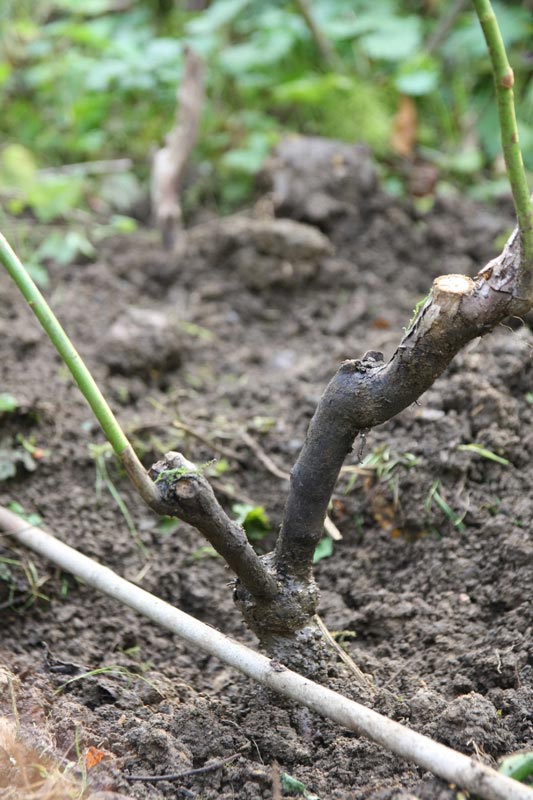
The graft union should sit slightly above soil level.
- Once roots are covered, firm soil around the rose to create a shallow watering basin. Check stability by gently pulling – it shouldn’t move.
- Water thoroughly.
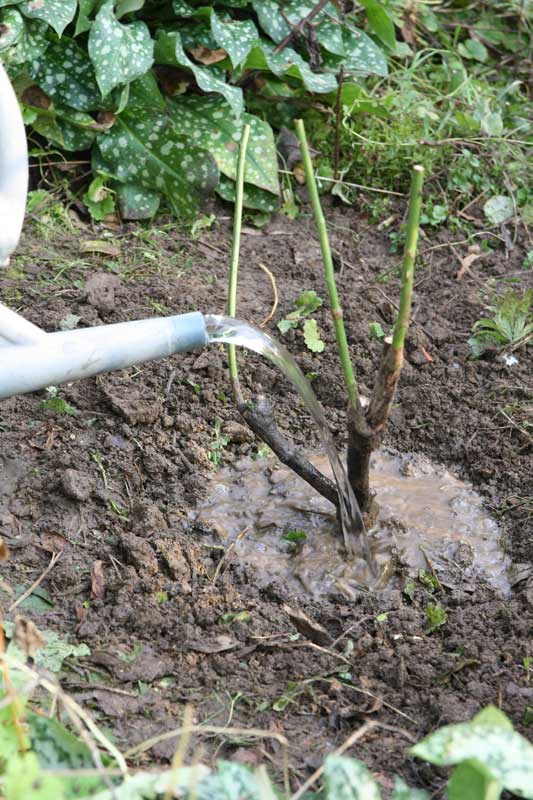
Thorough watering eliminates air pockets.
- Cover the graft union with a thick layer of leaf mould or straw.

Protecting the graft union with leaf mulch.
Throughout the first year, maintain consistent but moderate moisture.
How to plant climbing roses and standard roses?
Start by probing the soil with an iron rod to locate a spot free from large roots. Be careful not to plant at the base of an evergreen, as the rose would lack sufficient light. Proceed with planting as explained earlier, depending on whether it’s a container-grown or bare-root rose. Rambling roses should be positioned 50 cm to 1 m from their support and slightly inclined towards it.
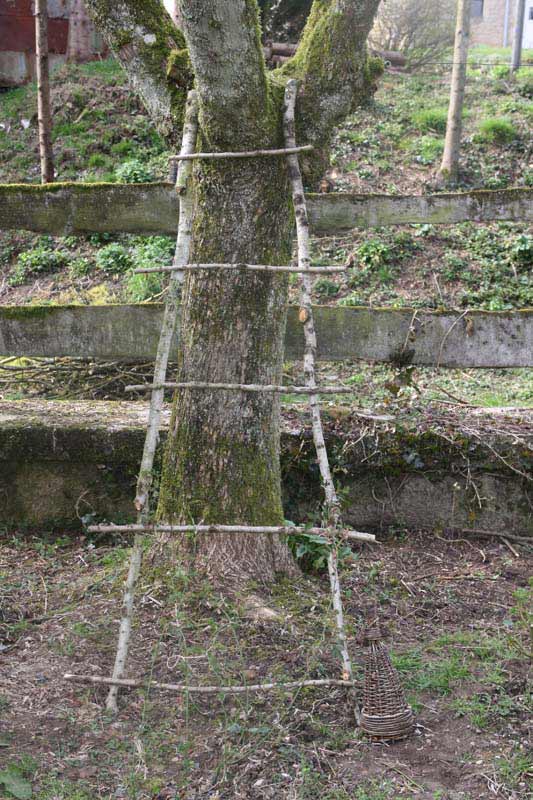
Wooden ladder to guide a rambling rose towards the tree.
When planting standard roses, remember to insert a sturdy stake at the bottom of the planting hole. This should be done before placing the rose to avoid damaging the roots. Whenever possible, opt for a bare-root rose to avoid having to pierce the root ball with the stake. Take care not to tie the support too tightly to prevent creating a constriction ring later on.
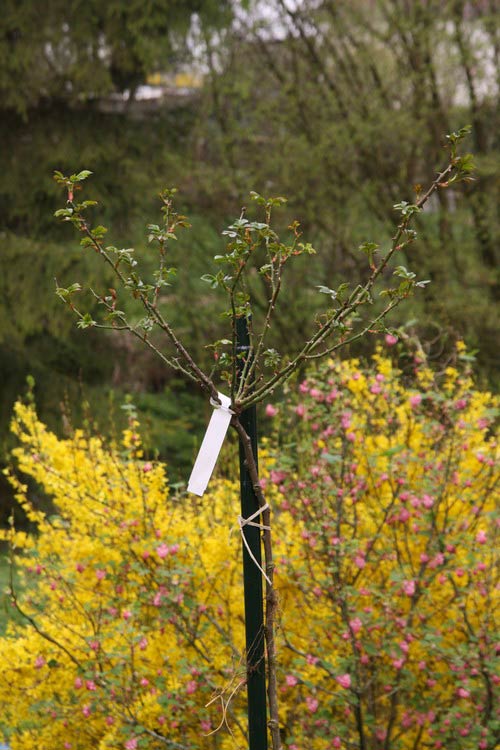
A stake is essential for standard and weeping roses.
These roses are varieties grafted onto stems of varying heights, provided by a vigorous “wild” rose that serves as rootstock. The graft union must absolutely be protected from frost with horticultural fleece. You will also need to remove any suckers that form on the stem.
How to plant roses in pots?
Choose a compact, slow-growing variety that is better suited to container cultivation, and select a pot size proportionate to the rose’s development. Allow for 30 cm in diameter and depth for a miniature rose, 40 cm for a dwarf rose, and 50 cm for a standard bush or small climber.
The pot must have drainage holes to allow excess water to escape. Preferably, opt for a terracotta pot, as its porosity is beneficial for the roots. To improve drainage, place a 5 cm layer of gravel, broken pottery, clay pebbles, or pumice at the bottom of the pot.
To create a good growing medium, prepare a mix consisting of:
- 1/3 garden soil (if unavailable, a good-quality potting compost will suffice)
- 1/3 high-quality compost, ideally rose-specific compost
- 1/3 well-rotted compost or manure
Position the rose in the pot and fill with your mix until the graft union sits just above the surface. Water thoroughly.
Note that potted roses require more attention than those planted in the ground. Regular watering is essential. However, take care not to overwater your rose. Additionally, the only nutrients available to the rose will be those you provide: apply fertiliser regularly during its growing season. Discover when and how to fertilise your roses: Rose fertiliser.
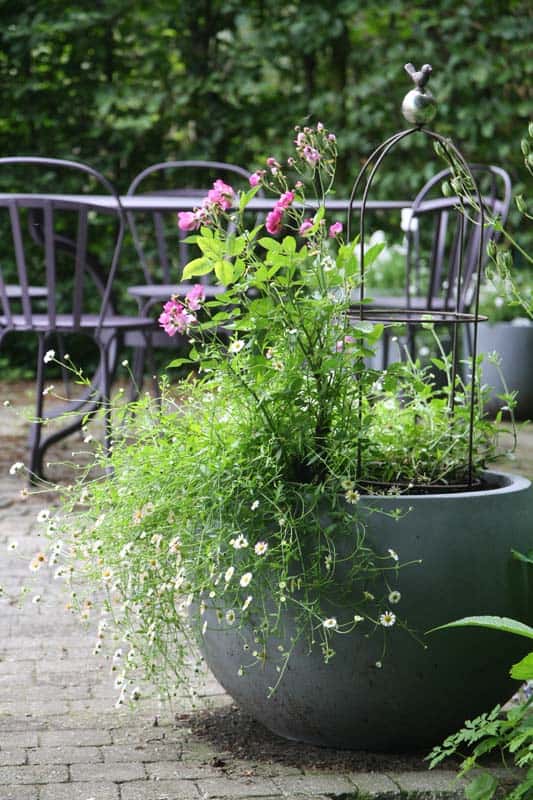
Remove all spent flowers to prevent the rose from exhausting itself by producing fruit.
Frequently Asked Questions by Gardeners
- One of my rose bushes has died, I’d like to plant another in the same spot. Is this possible?
Avoid planting a rose bush in a spot recently occupied by a predecessor. Indeed, many rose bushes release toxins into the soil intended to deter others from their territory. If you have no other choice, we recommend replacing the soil to a width and depth of at least 50 cm.
Virginie’s tip: From personal experience, adding mycorrhizae also helps with successful establishment.
- I’ve heard that when planting, the graft union of my rose bush should be buried.
Whether or not to bury the graft union is a controversial topic. In the past, specialists recommended positioning the graft union slightly above ground level. Nowadays, they increasingly advise burying it to prevent the development of latent buds and suckers on the rootstock. When the rootstock is buried this way, the grafted plant may develop its own roots. Some consider this nonsensical, as it removes the rootstock’s purpose as an intermediary between soil and plant, allowing better adaptation between the two. This argument seems perfectly valid, especially when dealing with poor soil for roses, such as very chalky ground. In such cases, only an appropriate rootstock allows roses to be grown under good conditions. Furthermore, many varieties lack sufficient vigour to thrive without the rootstock’s sap supply. However, with good rose soil, there may be advantages to letting the plant grow on its own roots. This avoids suckers and significantly increases the shrub’s longevity. Some rose growers therefore recommend burying the graft union by 5 to 10 cm. In regions with severe frosts, burying the graft union offers better protection against freezing.
- Subscribe!
- Contents






































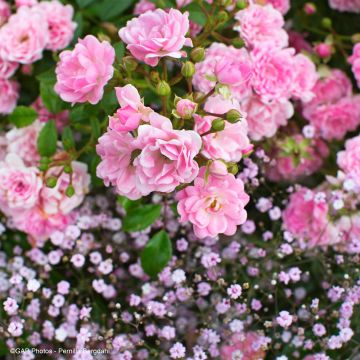

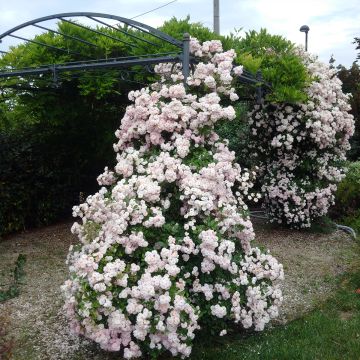



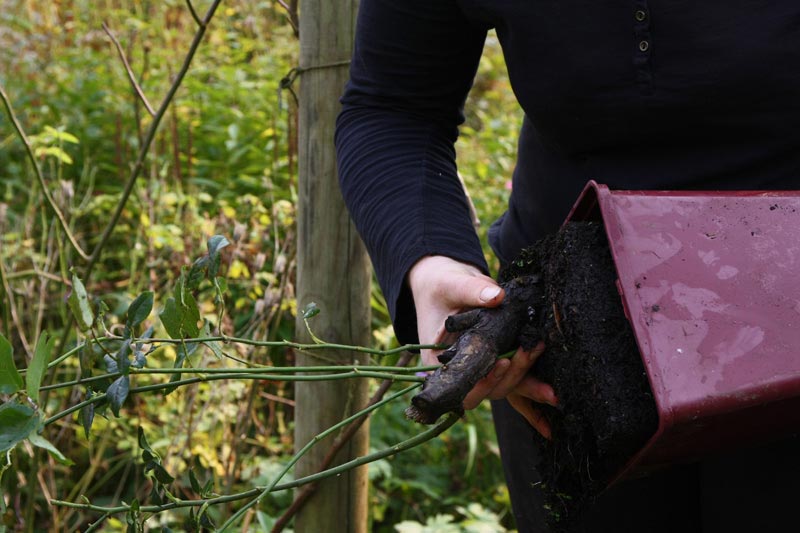
Comments